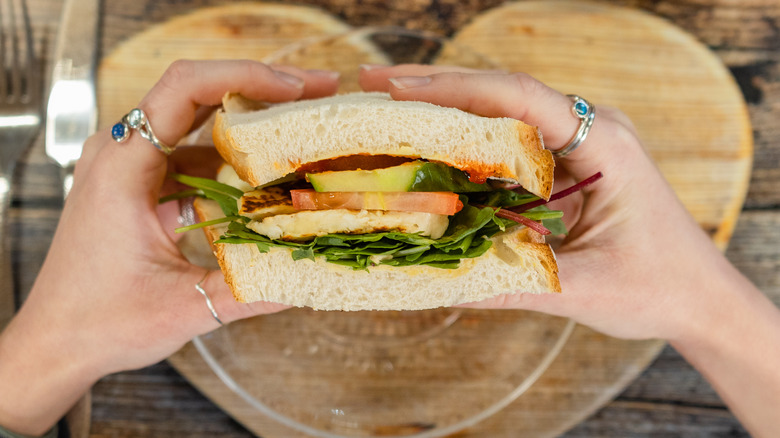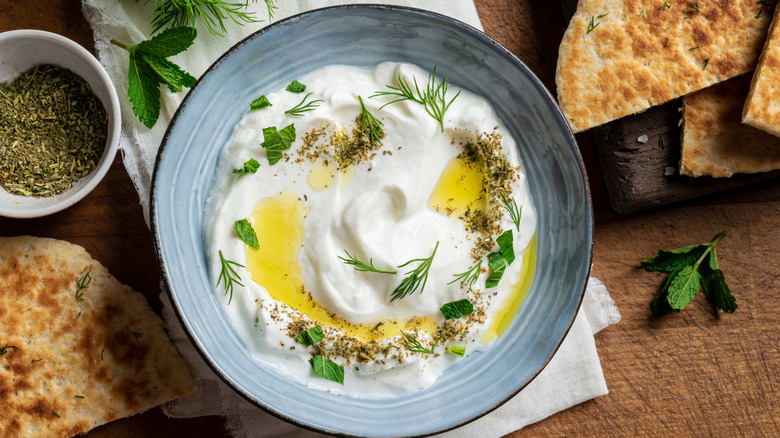The Garlicky Mayo Alternative That Can Upgrade Your Sandwiches
We may receive a commission on purchases made from links.
By now, everyone knows the joy of garlic aioli. The creamy sauce is perfect for dipping french fries into or as a condiment for sandwiches — or even Graham Elliot's favorite burgers — but there's a lesser-known alternative that brings the same punch of flavor with a Middle Eastern flair: labneh.
Labneh is the Levantine answer to Greek yogurt, a creamy, slightly tart dairy dish that is double-strained until it reaches a thick consistency somewhere between yogurt and cheese. The two classic forms of labneh are Turkish and Lebanese, which vary in several ways. Lebanese labneh (say that five times fast) — also called labneh ambaris – is high in probiotics while Turkish labneh lacks probiotics and has a higher fat content.
While often served with a simple spread of olive oil and za'atar seasoning — another centuries-old Middle Eastern staple — it can also be turned into a beautiful, garlicky sandwich spread with minimal effort. All you need are labneh, garlic, olive oil, salt, and pepper — though you can also add spices like chili flakes or cayenne, cilantro, mint, the aforementioned za'atar, or even olives, depending on your preferences. Quickly combine these ingredients in a food processor, and you've got a dip that's just as delicious with slices of pita or veggies as it is as a topping for your favorite sandwich. To make it last, you can preserve your labneh in olive oil — and then repurpose the flavorful oil when you're done.
History of labneh and how to make it at home
The history of yogurt in the Middle East is believed to stretch back millennia to ancient Mesopotamia — though what was produced then was probably not what we today would consider labneh. One of the earliest known references to the dish comes from a cookbook dating back to the 13th century called "Kitab al Tabikh," better known in English as "A Baghdad Cookery Book," one of the oldest — if not the oldest — Arabic cookbooks — though the cuisine is, of course, Persian or Persian-influenced.
Both Bedouins and nomadic Turks are believed to have cultivated labneh-related dishes as early as the first century B.C., if not before. Traditionally, Lebanese labneh ambaris was made from goat's milk and stored in clay jars, following a process unique among dairy products. Salt and milk were added over a two-month period while the whey was gradually drained away.
Thankfully, those making labneh at home won't have to wait two months to enjoy the fruits of their labor and can start adding garlic labneh sauce to sandwiches within 24 hours. The modern uses for this spread are wide-ranging. It's hard to go wrong when pairing this spread with classic Middle Eastern or Mediterranean dishes such as lamb burgers with feta, chicken shawarma, or falafel. Greek souvlaki or kebabs, while having slight differences, will both make for a delicious base for this sauce. You can also use it on more traditional American dishes like a labneh and roasted carrot grain bowl, or in sandwiches like turkey or roast chicken, especially paired with roasted red peppers or sundried tomatoes and fresh herbs for added brightness, like mint, dill, or parsley.


